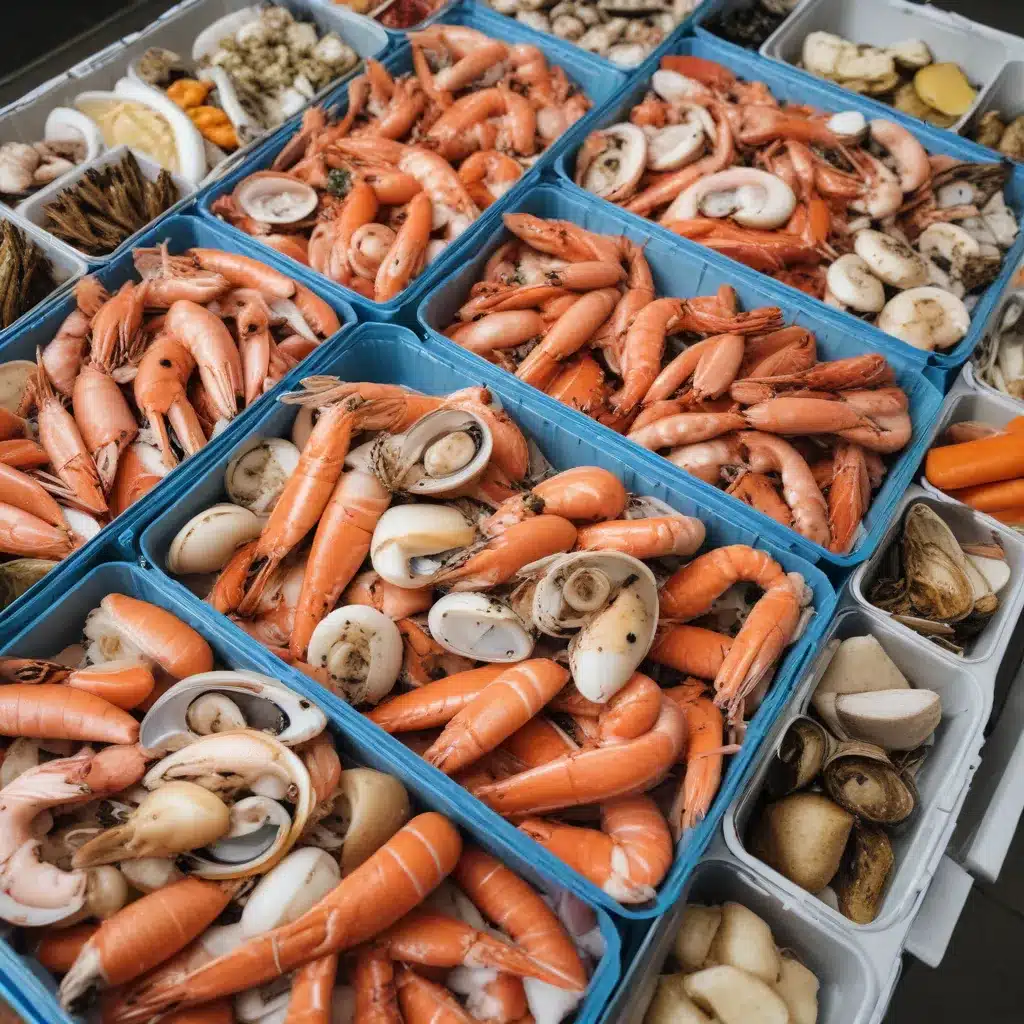
Seafood enthusiasts eagerly await the next delectable catch, but the reality is that fresh seafood has a relatively short shelf life. Proper storage and handling techniques are critical for maximizing the window of peak freshness and flavor. At Fish Tales Cafe, we’re dedicated to helping you conquer seafood spoilage through innovative solutions that preserve the integrity of your favorite marine delicacies.
Seafood Spoilage Challenges
Seafood spoilage is a complex issue driven by a range of factors, from bacterial growth to enzymatic degradation processes. Understanding the underlying science is key to developing effective storage strategies.
Factors Affecting Seafood Freshness
The freshness of seafood is influenced by a variety of intrinsic and extrinsic elements. Intrinsic factors include the species, fat content, and inherent microbial load of the fish or shellfish. Extrinsic factors encompass the handling, temperature, and storage conditions encountered throughout the supply chain.
Bacterial Growth and Proliferation
Seafood is a highly perishable protein, and the rapid proliferation of spoilage bacteria is a primary driver of deterioration. Psychrophilic and mesophilic bacteria, such as Pseudomonas and Shewanella, can quickly multiply in improperly stored seafood, releasing foul-smelling compounds and compromising food safety.
Enzymatic Degradation Processes
In addition to microbial activity, seafood spoilage is also accelerated by naturally occurring enzymes that break down proteins, lipids, and carbohydrates. This enzymatic degradation leads to the development of off-flavors, textural changes, and nutrient loss over time.
Innovative Seafood Storage Solutions
Combating seafood spoilage requires a multifaceted approach, and advances in food science and technology have given rise to a range of innovative storage solutions. Let’s explore some of the most promising techniques for preserving the quality and freshness of your seafood haul.
Refrigeration and Temperature Control
Maintaining the cold chain is the foundation of seafood storage. Proper refrigeration at temperatures between 32°F and 40°F (0°C to 4°C) helps slow the growth of spoilage microorganisms and enzymatic reactions. Careful monitoring and temperature regulation throughout the supply chain, from the docks to your kitchen, is crucial for maximizing shelf life.
Modified Atmosphere Packaging
Modified atmosphere packaging (MAP) involves adjusting the composition of the gas surrounding the seafood to create an optimized environment for preservation. Typically, this involves reducing oxygen levels and increasing concentrations of carbon dioxide or nitrogen. This approach inhibits the growth of aerobic bacteria and slows enzymatic degradation, resulting in extended shelf life.
Vacuum Sealing Techniques
Vacuum sealing is another effective method for preserving the freshness of seafood. By removing oxygen from the packaging, this technique prevents the growth of aerobic microbes and minimizes oxidative processes that lead to quality deterioration. Vacuum-sealed seafood can maintain its freshness for significantly longer periods compared to traditional storage methods.
Optimizing Seafood Shelf Life
Maximizing the shelf life of seafood involves a combination of careful handling, proper packaging, and continuous monitoring. Let’s explore some key strategies for ensuring your seafood remains at its peak quality.
Maintaining the Cold Chain
As mentioned earlier, the cold chain is the foundation of seafood storage. Ensuring the unbroken maintenance of low temperatures, from the initial catch to the final preparation, is essential for preserving freshness and food safety. This may involve the use of insulated containers, refrigerated trucks, and dedicated seafood display cases in retail settings.
Proper Packaging and Labeling
Effective packaging and accurate labeling play a crucial role in seafood storage. Choosing the right materials, such as vacuum-sealed bags or modified atmosphere packages, can create a protective barrier against environmental factors that accelerate spoilage. Clear and informative labeling, including catch dates, sell-by dates, and handling instructions, empowers consumers to make informed decisions and properly store their seafood purchases.
Monitoring for Quality Indicators
Seafood freshness can be assessed through various quality indicators, such as appearance, texture, and aroma. Regularly monitoring these characteristics and implementing sensory evaluation protocols can help identify the optimal window for consumption and prevent the serving of spoiled or unsafe seafood.
Emerging Preservation Technologies
While traditional storage methods have their merits, the seafood industry is continuously exploring innovative preservation technologies to further extend the shelf life and quality of marine products.
Active and Intelligent Packaging
Emerging active and intelligent packaging solutions integrate antimicrobial compounds, oxygen scavengers, or time-temperature indicators into the packaging design. These advanced materials can actively inhibit microbial growth, react to environmental changes, and provide real-time information about the seafood’s freshness and safety.
Antimicrobial Coatings and Treatments
Researchers are investigating the use of natural or food-grade antimicrobial compounds, such as plant-based essential oils or bacteriocins, to create protective coatings or dipping treatments for seafood. These innovative approaches can provide an additional barrier against spoilage bacteria and extend the shelf life of fresh and processed seafood products.
Dehydration and Freeze-Drying Techniques
Techniques like dehydration and freeze-drying can significantly reduce the moisture content of seafood, effectively inhibiting microbial growth and enzymatic degradation. These preservation methods, combined with proper packaging and storage, can result in shelf-stable seafood products with extended shelf life and desirable sensory properties.
As the global demand for seafood continues to rise, the need for innovative storage solutions has never been more pressing. By understanding the complex factors that contribute to seafood spoilage and embracing the latest preservation technologies, we can conquer the challenge of maintaining freshness and maximize the enjoyment of our favorite marine delicacies. For more information on seafood storage and handling, be sure to visit Fish Tales Cafe.

